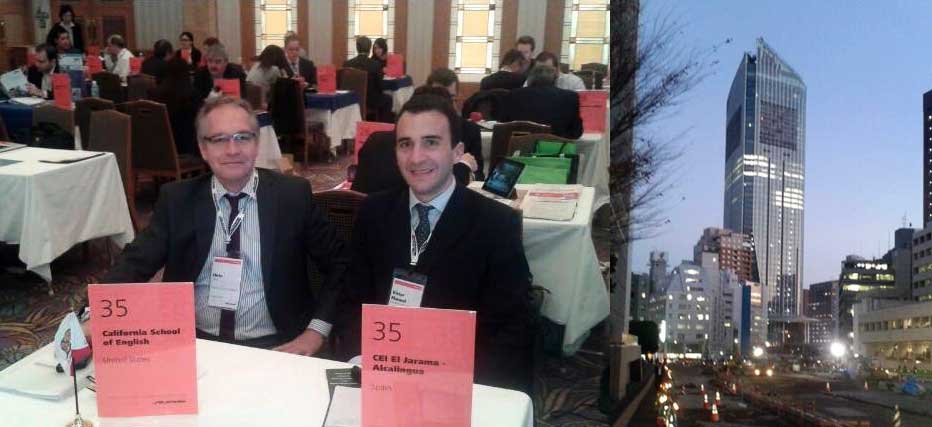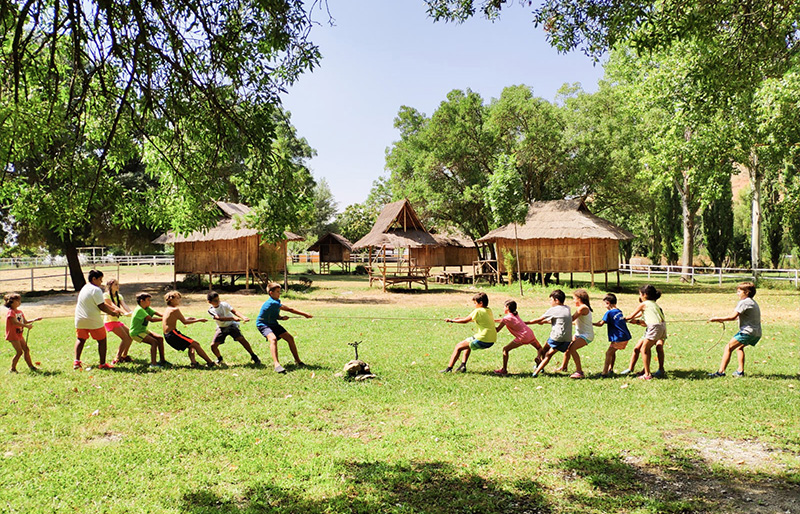Learning spanish in spain. It did not take me long time to decide to join in for the Alphe Korea 2013 and Alphe Japan 2013. The downside to these impulsive yet drastic decisions is the risk it becomes a “habit” (i.e. every time there is an international conference on study abroad, it just takes me a few hours to make up my mind and book in). This would not be very recommendable since it would incur huge expenses for the company but even worse, a possible divorce…
However, in this case the decision to go to Korea and Japan has been highly fruitful and convenient as it is beneficial to CEI El Jarama´s endeavours: CEI El Jarama is promoting ajoint programme with Alcalingua (Universidad de Alcalá) that aims to encourage foreign students under 18 years (juniors) to mix with hundreds of the Spanish students that decide to spend their summer holidays with CEI El Jarama … learning spanish in spain.
Learning spanish in spain with CEI El Jarama
Is our observation of an increase in demand for language courses a fiction or a reflection of reality?
There is indeed an increasing demand for Spanish courses.
– Spanish is increasingly being studied in the world as a second or third language. Although still a little far from the strong influence of English, it is now making remarkable progress in schools and educational institutions. After the local mother tongue, both English and Spanish are considered second and third languages respectively, whilst in English speaking countries, and especially the USA, Spanish is considered a second language.
– Some argue that Spanish is the language with the largest native speakers in the world. Others claim that Chinese or even English come first. It all depends on what you consider “mother tongue”, for example if Chinese includes Mandarin and Cantonese or not, etc. However, it is important to recognize that approximately 400 million people are native Spanish speakers and these figures keep increasing.
– Another significant growth and importance of Spanish is its influence in the USA. The knowledge of Spanish is now considered key, as there is more and more preference and higher demand for Hispanics who master both English and Spanish.
– Finally, a recent report from the British Council reflects the need for deeper studies of foreign languages in the UK. It encourages education institutions to train the population, specially the youth, in what they call the “Languages for the Future”. And guess which is the first of those 10 languages!! Yes, Spanish.
These, amongst other reasons, led the Instituto Cervantes, 22 years ago, to venture into spreading and encouraging the use of Spanish. At that stage they could foresee how relevant Spanish was going to be and started opening centres all over the world. But this prestigious institution is not the only one acting as a facilitator for teaching Spanish, since there are plenty of Spanish or Latin American universities, language schools or study abroad agencies that provide fantastic opportunities to learn or improve Spanish everywhere in the world.
Where to Learn spanish in spain – Learning spanish in spain
Universidad de Alcalá, and specifically its centre for Teaching Spanish as a Foreign Language, Alcalingua, has been delivering Spanish courses in Alcalá de Henares (Madrid) for adults -university students and seniors, for more than 20 years. Now, based on a joint venture with CEI EL Jarama, the programme Spanish Immersion in Spain was developed to cater to younger people. If you are considering to learn Spanish abroad, we recommend you to think of learning spanish in spain.
Why choose to promote in Korea and Japan?
Let us explain but a few:
– Alcalingua has extensive experience with East Asia, mostly importantly China, Japan and (South) Korea. They know these markets very well and also know what these societies demand and expect. Something that shouldn’t be taken for granted.
– Most importantly, East Asia is a massive emerging market in every area, including education. Every year their societies – their people, become wealthier and thus can think of saving some money to invest in their children´s education.
– Actually, it is a common trend in such countries that as their citizens rise to a more middle class standing, they become highly obsessed with their children´s education. It is noticeable that the level of education and mentality of these societies have an influence on children, as they are known to be extremely diligent and responsible regarding their studies. They are known to be very good in maths, music or languages subjects, to name but a few. This makes learning spanish in spain not only very effective, but fun at the same time!
Would you permit me to give you a glimpse of what I experienced on my short trip to both countries?
Seoul
You may enter a supermarket and not know any of the food products they may offer. Totally unknown ingredients for Westerners, vegetables, roots or simply spices; and the multiple ways they have to mix and cook such ingredients. As a result you find delicious and incredibly varied dishes and combinations in any restaurant of Itawoen street, for instance. Korean sashimi is probably its best known dish but, believe me, there is much more to it. Finding tasty food on the streets is just as common as in the rest of Asia.
On the other hand you feel safer than at home and hospitality and respect is as high as in any other of its neighbouring countries.
South Korea is amazingly developed considering the hard 20th century they went through – several wars and occupations. It is nowadays a fully developed country, with an estimated 3,8% GDP growth for 2014. It has around 50 million inhabitants, 24 million living in Seoul metropolitan area (Sudogwn). Its surface area is about 100,000 km2 (one fifth of Spain´s surface area). Brands like Samsung, Hyundai, LG, KIA, etc. show the power and potential of this country.
In summary, you can see lots of traditional features of a continental East Asia culture in their people´s behaviours, but with a modern and up-to-date flavour of a fully developed country.
Tokyo
Probably something unique in this planet, I dare to say. No parallelism with any other city I know. Every culture and society is a product of his past but, in Japan this is probably even more noticeable. And it is not only the past events that model the current culture, but also their people´s determination not to lose ties with their traditions and to row on the same direction on everything they do.
In downtown Tokyo , tiny wooden restaurants seem to be taken from theearly Tokugawa times, in the 17th century, delivering amazing first class quality meals, always home-made, by the way.
But Tokyo is different from the rest of Japan, and not only because of its magnitudes and the fact that is the largest metropolitan economy in the world, but specifically because it was rebuilt time and time and again from almost nothing but bare ashes. The last time it was almost totally burnt down was during the indiscriminate air raids by the allies during the Second World War in 1945. Most of the city was on fire, and consequently destroyed, since nearly all the houses at that time were built with wood.
In 68 years, since 1945 till now, Tokyo has become a superb, top-rank city, with every single detail perfectly planned and looked after. Its clean and perfectly tar-marked streets, their organized districts and means of transportation are just a few examples. Its fantastic sky-line and in all, hundreds of magnificent buildings and road infrastructures lead one to think of European cities as small-scale tests of city construction and planning.
Some figures to conclude, Japan has 127 million inhabitants, whilst around 36 million people live just in the metropolitan area of Tokyo. Whilst Japan has 6,852 islands and a total surface area of 377,944 km2, most of the population lives in valley areas which are only a 25% of the total land – the rest formed by inhospitable mountain ranges. This creates one of the greatest population densities in the world. It is the 3rd economy in the world, just behind China and the USA, and the average gross domestic product is around 35,000$, compared to the Spanish, 30,000$ or the US 50,000$.
Have you not been in this part of the world yet?
What can I say? Find yourself an excuse to go and do not think about it twice!!
Learning Spanish in Spain > Post written by Víctor Manuel Rodríguez Martínez (Head of CEI El Jarama)






